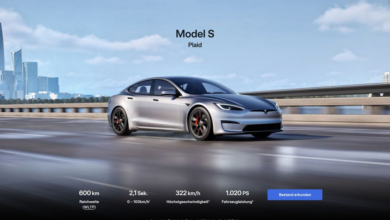Want To Get The Most EV Range? Here’s Why You Should Consider Driving Slower

- Car and Driver tested the range claims of the Lucid Air and Kia EV9 from 35 to 95 mph.
- Predictably, the slower you go, the better range you’ll get.
- However, their calculations say the Lucid Air could only go 47 mph to achieve its 410-mile rating. The Kia EV9 can do it at 66 mph.
Just the other day, a friend of mine who currently owns a gas-powered Acura RDX, but is curious about ditching it for an electric vehicle, asked me about range. Like most drivers interested in going electric, he had lingering questions about just how far he could go on a charge.
One night, we talked about the Cadillac Lyriq. It’s rated for about 300 miles, and he wanted to know: could it actually do 300 miles on the freeway? I explained that, no, it likely won’t, since most range estimators are actually a mix of highway and city driving cycles.
But then he asked me a question that I wasn’t sure how to answer: “How much range will you lose on the freeway? Will I lose more going faster?”
I didn’t have an answer. I knew that EVs definitely lose some range as highway speeds pick up, but just exactly how much? I wasn’t sure.
Well, our friends at Car and Driver have given everyone an idea of just how much of a range delta EV drivers are in for when they’re freeway driving. The mag took a Kia EV9 and a Lucid Air and compared their individual range and efficiency results on the freeway, once at 75 mph, and then again at 55 mph.
Here’s a hint: If you’re looking to gain range, it’s best if you drive slowly.
For starters, the range estimates for any sort of highway driving will always be less than what’s on the window sticker. EVs are good at using regenerative motor-based braking instead of friction brakes while driving in the city, recapturing some energy and placing it back in the battery. Since freeway speeds are constant, there’s no way for this energy-saving technology to ever really be used.
But, Car and Driver discovered that the car’s rate of draw increases exponentially the faster you go. The test was done from 35 mph, all the way up to 95 mph. Predictably, the electric cars will swill a lot more, the faster they go. “No surprise that the more aerodynamic Air does better at higher speeds, with a 23 percent drop between 55 and 75 mph and a 24 percent drop between 75 and 95 mph. The EV9, on the other hand, plummets more than 30 percent between each of those increments. (Of 20 mph.)”

Photo by: Kevin Williams/InsideEVs
The feature is worth a read in full. But not all things are created equal, though. The boxier EV9 may have lost more miles at higher speeds, but it was more on target for its freeway range; it would take a freeway-capable 66 mph to match its combined EPA rating, while the Air has to make do with a pokier 49 mph to match its rating.
For what it’s worth, this tracks with my own anecdotal experience. I’ve taken the EV9 on a road trip before. It may not have the same range as some of its competitors, but I was pleasantly surprised at its fairly decent range and efficiency numbers it returned while on a longer-distance drive. Similarly, the Lucid Air’s range beat the EV9, but I’d be lying if I said I wasn’t a little disappointed with how its freeway driving wasn’t quite so close to its range estimation.
Whatever the case, though, EVs generally do better the slower they go. If you want to make those miles count, then maybe slow down, okay?
Contact the author: kevin.williams@insideevs.com
Source link

